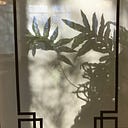A Quick Guide to Eco-Friendly Fibers, and Which to Avoid if You’d Like to Shop Sustainably
Which fabrics are more eco-friendly, especially when it comes to the ambiguously plant-based but highly processed ones like rayon?
I’m concerned with biodegradability, sustainability, toxicity of cultivation and processing, and human (workers being poisoned) and animal suffering. When these factors are taken into account, some fibers fare relatively better than others, but spoiler, the process of doing this research has made me more determined to avoid buying clothes at all unless really necessary.
Synthetic fibers
Not only are these made from oil, the processing is toxic and bad for the environment and workers, they are not biodegradable (can take 200–300 years to decompose!), and even recycled or reclaimed versions of these fabrics still release plastic microfibers, which wind up in our oceans, rain, food, and in us. Toxins may also be absorbed through the skin.
Polyester — plastic manufactured from crude oil, energy-intensive production, wearing and washing releases microfibers into the water and environment
Nylon — made from oil, processed with harmful chemicals, manufacture creates greenhouse gas nitrous oxide, non-biodegradable
Spandex — plastic based, not biodegradable, similar problems to other synthetics
Acrylic — plastic based, not biodegradable, similar problems to other synthetics
Semi-synthetic fibers
These are processed materials made from plants, but can involve use of toxic chemicals and often non-sustainable harvesting practices.
Rayon — also known as Viscose; made from plants like bamboo and trees, associated with toxic, chemical-heavy, industrial production (thus, there are no rayon producers in the U.S.) and deforestation
Modal — a type of Rayon fabric; usually made from softwood trees, production doesn’t output toxins as much, can still lead to deforestation (may be better if sourced from European or N. American forests)
Tencel — a type of Rayon generically called Lyocell; possibly safer production, made from sustainably-sourced eucalyptus
Bamboo linen — processed mechanically (by retting) rather than chemically, smaller environmental impact as a result, expensive and not common
Plant-based fibers
These are natural and biodegradable, but their environmental impact can still be quite heavy depending on the processing. Organic versions are generally better.
Cotton — sometimes called the “dirtiest crop”, as it uses a tremendous amount of water (2,700 Liters for one cotton t-shirt), pesticides, insecticides, and arable land; organic cotton is preferable in that it forgoes the pesticides
Linen — made from flax, can be but not always cultivated and processed without chemicals
Hemp — no chemical processing required, less water needed than cotton, low amounts or no pesticides needed
Ramie — made from a type of nettle, not common
Animal-based fibers
Ethically speaking, these entail varying degrees of animal suffering, cruelty, and loss of life. However, the materials are biodegradable.
Silk — requires that silkworms be killed by boiling; there are alternative ways of harvesting that are not widely adopted
Leather — made from dead animal skin (from animals raised for their meat), tanning process usually is not environmentally friendly, methane output
Wool — 50 percent of the carbon footprint from wool is methane emissions from burping sheep, chemicals used to dip sheep are toxic to workers
Cashmere — made from goat hair (either combing or shaving); less water needed, no chemicals or pesticides needed, animals may not be treated well
Conclusions:
There’s no way out of it; all fibers have some issues, so it’s best to shop less and wear clothing longer. Your preferred approach may vary depending on what you’re comfortable with, but here’s the schema I’m going with, should I really need to make a purchase:
Okay to buy new, sparingly — Linen (Organic is better), Hemp (Organic is better), Organic Cotton
Okay to buy used or thrifted — Any of the above, Tencel (Lyocell), Cashmere, Wool (Organic is better)
Okay to buy used, but very rarely — Any of the above, Modal, Leather, Silk, Conventional Cotton
Don’t buy — Rayon (Viscose), Polyster, Acrylic, Nylon, Spandex
Tips:
-Washing clothes on cold water on a short cycle is more eco-friendly. You can also opt for a green detergent like Seventh Generation. If you like softener sheets, consider getting a wool ball.
-For the clothes you already own, there are bags for washing clothes in that will help trap microfibers from plastic-based fabrics.
-Shop less and wear clothes longer. If you do need to purchase clothing, buying more expensive, higher quality, sustainable items might balance out buying in much less quantity.
-If buying new, the way a fiber is sourced makes a difference; check the company’s website for specifics. It’s also good to support eco-conscious brands if you can.
-Donate or repurpose old clothing whenever possible.
Sources:
https://ecocult.com/greenwashing-alert-that-natural-fabric-made-from-plants-might-be-toxic/#:~:text=Rayon%20is%20made%20from%20plants,is%20the%20most%20eco%2Dfriendly.
https://www.treehugger.com/do-you-know-which-fabrics-are-most-sustainable-4858778
https://www.sustainyourstyle.org/en/fiber-ecoreview
https://www.eco-stylist.com/a-guide-to-the-most-and-least-sustainable-fabrics/
https://www.independent.co.uk/life-style/fashion/fabrics-environment-fast-fashion-eco-friendly-pollution-waste-polyester-cotton-fur-recycle-a8963921.html
https://www.swedishlinens.com/blogs/news/organic-vs-conventional-cotton
Conventional vs. Organic Cotton: https://www.vogue.com.au/fashion/news/how-sustainable-is-organic-cotton-really/image-gallery/fb482e3c60f8278705a7b76f2fafd069
